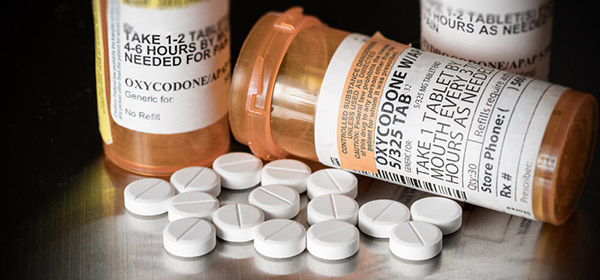The number of Australians accidentally dying from overdoses of prescription drugs is on the rise, with more than three quarters of overdose deaths involving pharmaceutical opioids.
A total of 1045 people died in 2016 from opioid overdoses, says a report from the National Drug and Alcohol Research Centre (NDARC) released today.
Australians are dying from accidental overdoses on prescription morphine, codeine, oxycodone and fentanyl, with drug experts closely monitoring the creeping death rates linked to the latter synthetic drug.
Opioid induced death rates have almost doubled in the past 10 years, from 3.8 to 6.6 deaths per 100,000 Australians.
Prescription drugs accounted for 65 per cent of these deaths, another 11 per cent were attributed to pharmaceutical opioids mixed with heroin, 500 people died from overdoses on morphine, oxycodone and codeine, and another 214 deaths were caused by synthetic opioids such as fentanyl, tramadol and pethidine.
Most of the opioid deaths (85 per cent) were considered accidental. However, 12 per cent were intentional and three per cent were not clear.
The rate of opioid-induced deaths was higher among males, and in 2016 alone, 143 people aged between 55 and 84 died from accidental opioid overdoses, from a total of 409 people who overdosed.
The report shows the danger of mixing prescription drugs, with 45 per cent of all accidental fatalities attributed to combining medications with benzodiazepine, 23 per cent with antidepressants, 14 per cent with drinking alcohol, 13.5 per cent with antipsychotics and 9.9 per cent with over-the-counter paracetamol.
While Australia’s rate of prescription drug overdoses hardly rivals that of the United States’ ‘epidemic’ rates, University of New South Wales Drug Trends program leader Dr Amy Peacock believes we’re on a similar trajectory.
“Although we are carefully monitoring the situation in Australia, at the moment, there is little evidence to suggest that illicit fentanyl is playing a large part in our opioid overdoses,” said Dr Peacock.
According to the report, there were 357 heroin deaths among Australians aged 15-64 in 2016, 105 deaths caused by amphetamines and fewer than 20 people had cocaine-related fatalities.
“This situation of increasing deaths due to pharmaceutical opioids in Australia has generated a response in the policy space. State and federal governments are considering a range of strategies, rolling out prescription monitoring programs and other interventions intended to reduce risky opioid prescribing.”
The Victorian Government already has a large-scale real-time prescription monitoring system in place, and the New South Wales Government is also being called upon by that state’s deputy coroner to prioritise implementing a similar program.
“Last month, the coroner said NSW needed to implement real-time prescription monitoring as a matter of urgency to help prevent accidental overdose deaths like that of young Sydney mother Alissa Campbell in 2015,” said State Opposition Leader Luke Foley.
“I urge the NSW government to introduce real-time prescription monitoring, if it doesn’t act on this Labor will, if elected in 2019.”
Dr Peacock says that anyone close to regular opioid users should carry and learn how to administer naloxone – an over-the-counter medicine that can temporarily reverse the effects of an opioid overdose, giving users time to seek medical help.
In February, the Federal Government introduced an over-the-counter codeine ban to curb codeine abuse and overdoses, with the painkillers now only accessible by prescription.
Do you take opioids? Do you ever worry about possible interactions with your medicines? Have you ever had a close call with an overdose?
Related articles:
No prescription, no painkillers
Prescription drug dependence
Be safe, be MedicineWise

